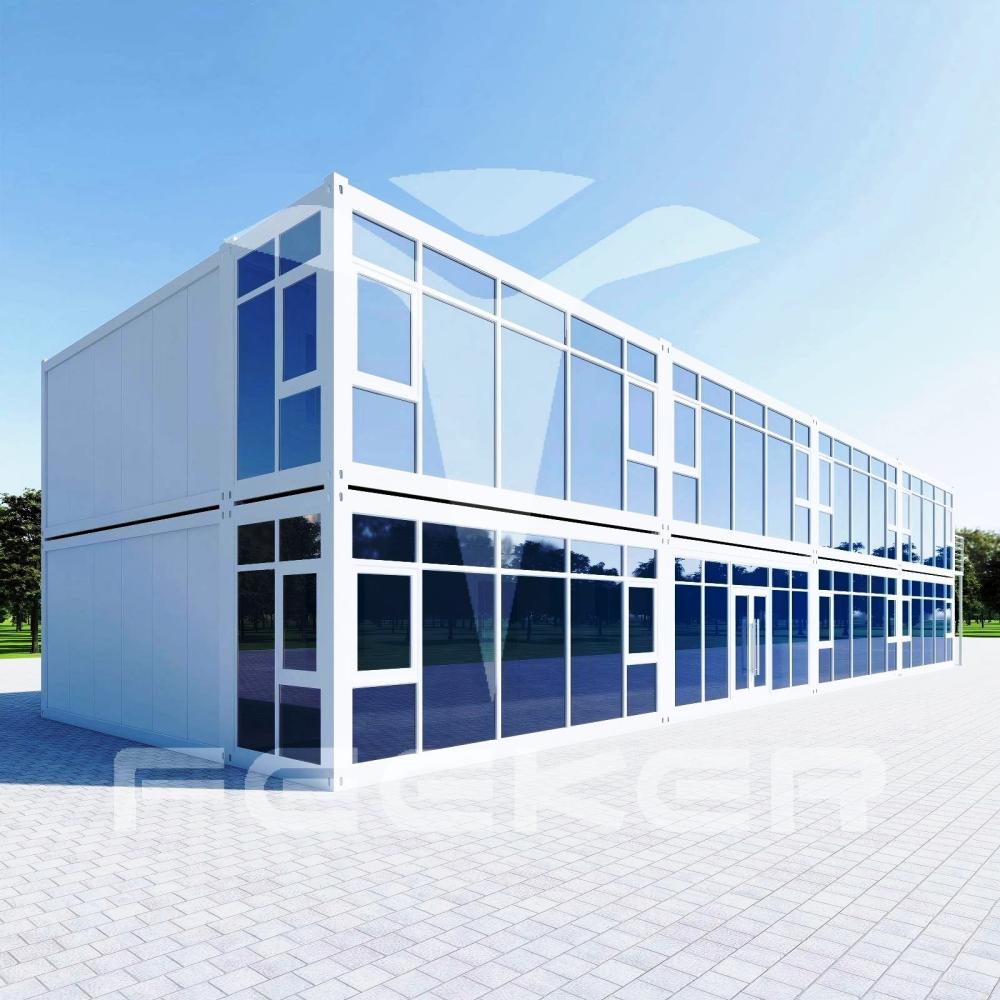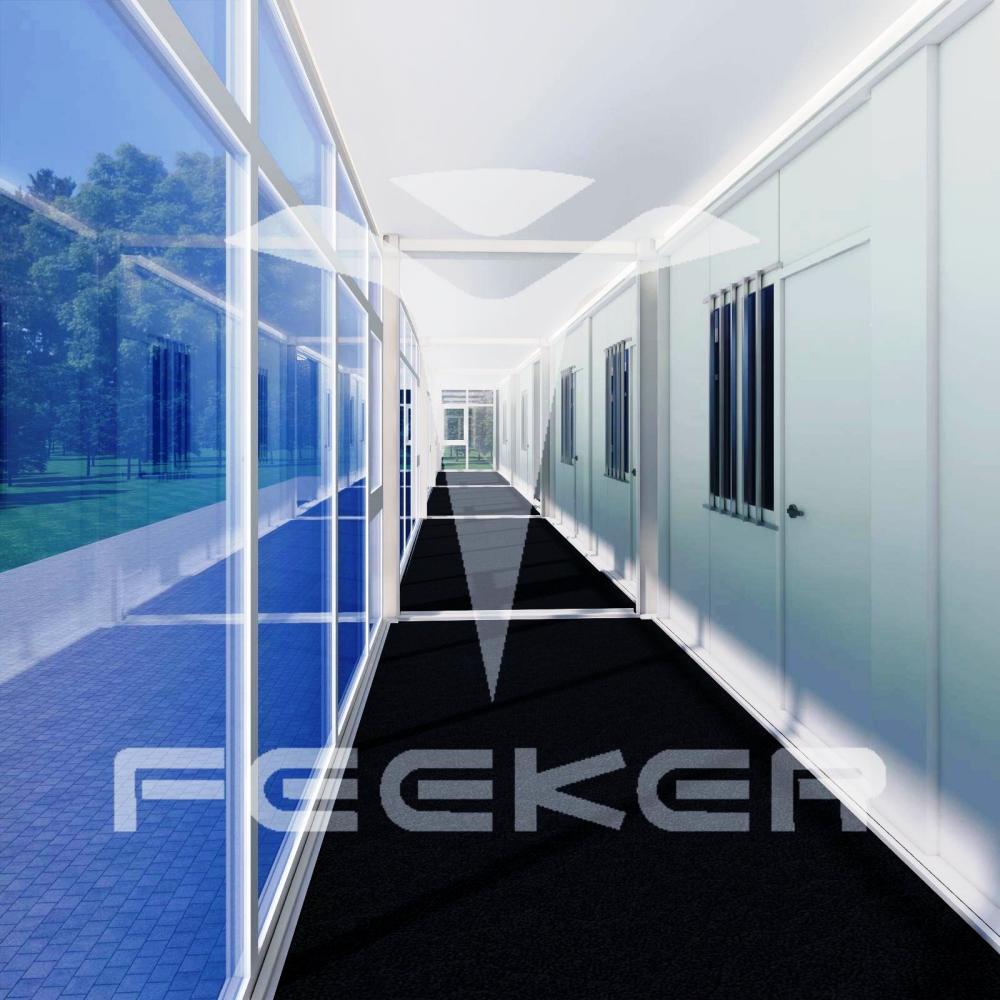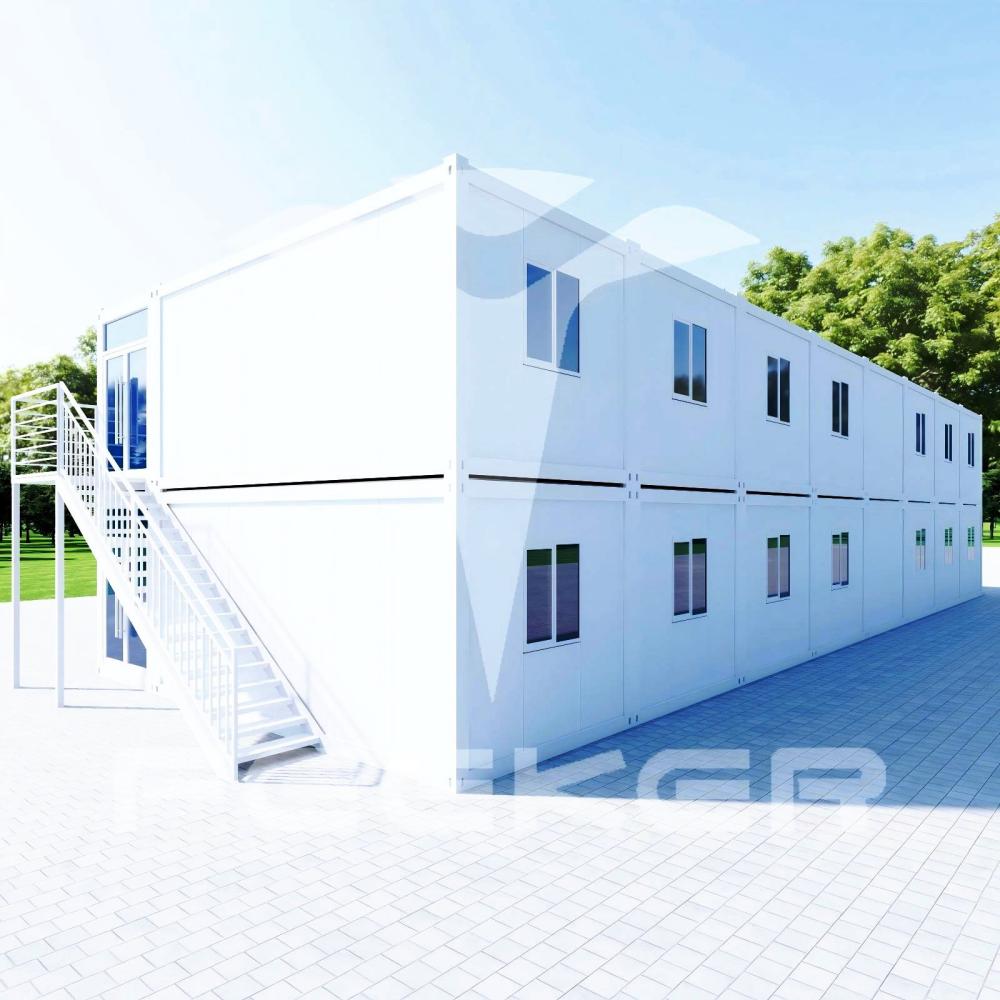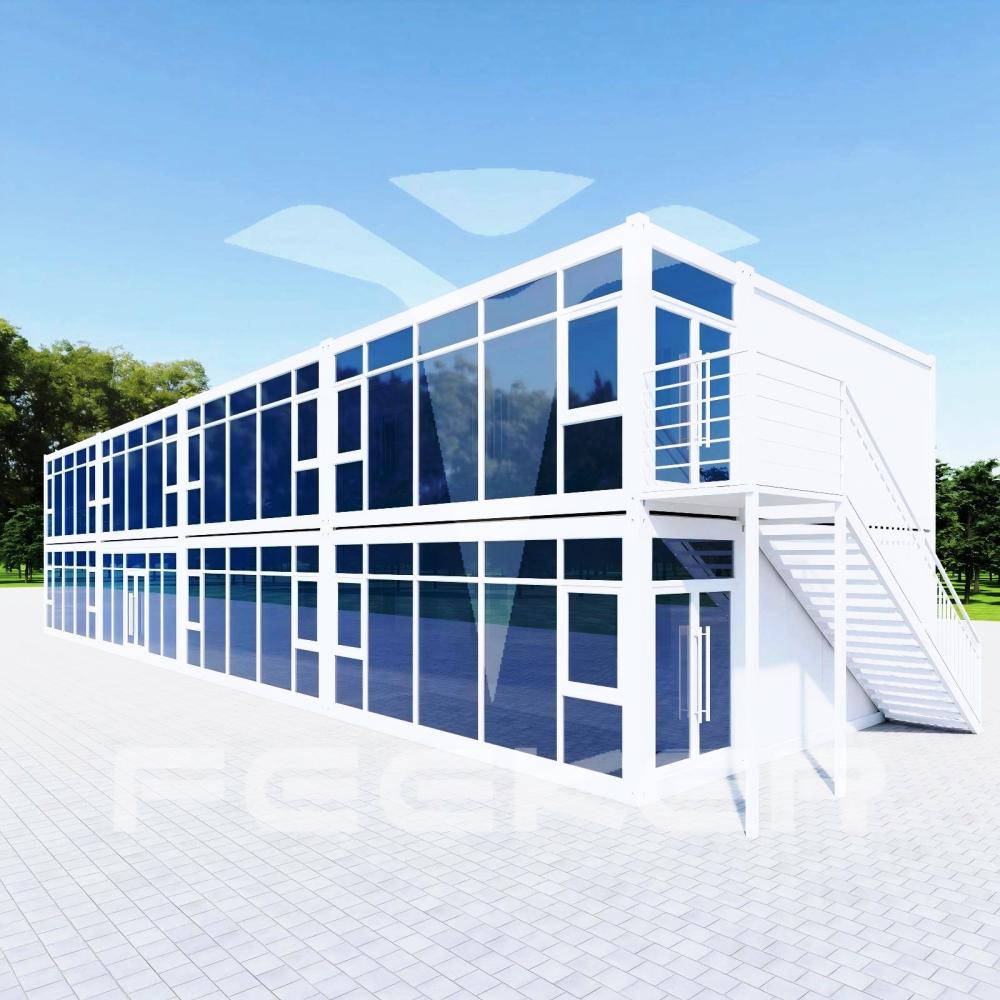Analysis of the core value of the prefab container house
–from the application to the construction of the full dimensional advantages
In the wave of development of the construction industry, the container house has rapidly risen with the unique label of “economical and practical + the king of cost-effective”. From temporary dormitories in construction sites, to creative net red cafes, culture and tourism B&Bs, and even large-scale overseas container communities, its application scenarios continue to break through the boundaries of traditional construction. In this paper, we will analyze the core value of container house from the application, environmental protection, efficiency, performance and other dimensions, to provide professional reference for investors, entrepreneurs and construction industry practitioners.

Ⅰ Introduction: the phenomenal popularity of the prefab container house
In recent years, the prefab container house has broken into the public’s field of vision with a gesture of subversion of tradition. Compared with traditional buildings, it not only has the characteristics of flexibility and versatility, but also can quickly meet diversified architectural needs. Whether it is a creative space in the city to build, or remote areas of temporary facilities, the prefab container house has shown a strong adaptability, and gradually become an important force in the field of construction can not be ignored. In this paper, we will dig deep into the value of its embodiment at all levels, to unveil the mystery of its popularity.
Ⅱ The application value: multi-scene all-round solution
1. the application of the whole field of ecological coverage
1.1 Construction engineering scene:
In the field of construction engineering, the prefab container house has long been the standard configuration of the construction project department, workers’ dormitory and site office. It can be quickly built to provide timely temporary construction solutions for the construction site, effectively solving the problem of personnel office and residence during the construction period.
1.2 Commercial innovation scene
In the commercial field, the application of prefab container house is full of creativity and vitality. Shanghai Yuyuan Road, for example, a red container block, a container after transformation, transformed into a fashionable cafe, specialty stores, attracting many consumers to card. In Moganshan, the container bed and breakfast cluster has achieved a high occupancy rate with its unique appearance and comfortable living experience, becoming a highlight of local tourism. In addition, the temporary exhibition hall is also often built using prefab container house, convenient and easy to move.
1.3 Livelihood protection scene
In the livelihood protection, the prefab container house plays an important role. In Turkey after the earthquake and other natural disasters, the prefab container house was quickly put into use for the affected people to provide temporary housing. In urban construction, Shenzhen containerized talent apartment project as a pilot city housing, to explore a new path to solve the talent housing problem.
1.4 Overseas market expansion
Looking overseas, the prefab container house also has a broad market. Container City Creative Park in London, England, the prefab container house into an office and living space full of artistic atmosphere; Southeast Asian tourist resorts using modular container hotel, for tourists to bring a unique accommodation experience.
2. The space revolution of humanized design
2.1 Customizable space
the prefab container house is very flexible in space design, the area can be flexibly combined between 30 – 120 square meters, whether it is a single-family residence, multi-family shared rent, or for office, commercial operations and other different functional requirements, can be achieved through reasonable design solutions.
2.2 Livability upgrade
In terms of improving living comfort, the container house adopts a variety of measures. In the choice of thermal insulation wall panels, rock wool and glass wool materials have their own advantages, which can effectively isolate the heat transfer; through professional sound insulation processing, reduce the external noise interference; scientific lighting optimization program to ensure that the indoor light is sufficient.
2.3 Complete supporting facilities
Today’s container house supporting facilities are becoming increasingly sophisticated, integrated bathroom and kitchen modules to facilitate daily life, but also pre-installed intelligent home appliance system, so that residents can enjoy a convenient modern life.
Ⅲ the value of environmental protection: respond to the needs of the times of sustainable development
1. the whole life cycle of green practices
1.1 Production stage
The container house adopts factory prefabricated production mode, which can reduce up to 80% of construction waste compared with traditional construction, and at the same time reduce on-site dust and noise pollution, practicing the concept of green production from the source.
1.2 Utilization stage
The steel structure of the main body with recyclable building materials, in the service life of up to 20 years, almost no construction waste will be generated, which is very friendly to the environment.
1.3 Dismantling stage
When the container house completes its mission, 95% of the materials can be recycled and reused, which greatly conforms to the development trend of circular economy and effectively reduces the waste of resources.
2. policy wind to help landing
2.1 First-tier city policy dividends
Shanghai, for example, according to the Shanghai Construction Management [2024] XX document, in line with the provisions of the red line within the scope of the use of the prefab container house, for creative parks, commercial districts, cultural and tourism lodging and other secondary green modular applications, if it does not disturb the people, no need to carry out the examination and approval of the policy, which greatly promotes the application of the prefab container house in the city.
2.2 Advantage of green building certification
Container house has obvious advantages in green building certification, can apply for LEED, China’s three-star green building and other certifications, and can get the corresponding bonus points for the sustainable development of the project to add momentum.
2.3 Carbon emission reduction benefit
According to the data of China Academy of Building Research, the carbon emission of a single container house in the whole cycle is 60% lower than that of a traditional building, which plays an active role in helping to realize the goal of “double carbon”.

Ⅳ Efficiency value: redefine the speed of building construction
1. The efficiency revolution of modular construction
1.1 70% of the process is completed in the factory
As a modular building, 70% of the construction process can be completed in the factory, covering the structure of the main body, water and electricity pipeline laying, decoration and decoration, effectively reducing the time and difficulty of on-site construction.
1.2 Comparison of on-site construction cycle
Take 500 square meters building as an example, the container building can be completed in 7 days only, while the traditional building needs about 3 months, the construction efficiency is greatly improved (see the following table for the specific construction process schedule).
| Construction Stage | Container Building | Traditional Building |
| Foundation Construction | 1 day | 7 days |
| Main Body Erection | 3 days | 30 days |
| Decoration and Decoration | 3 days | 50 days |
1.3 Transportation Convenience
Container house provides a variety of transportation options, such as folding type and whole package, whether it is a remote area or an overseas project, it can achieve fast and convenient delivery, and effectively solve the transportation problems. Solve transportation problems effectively.
2. Advantage of whole industry chain synergy
2.1 Design side
BIM technology is applied to carry out full-process design, and through 3D visualization scheme, design details can be adjusted in real time according to customer needs, ensuring that the design scheme accurately meets the usage requirements.
2.2 Production
Intelligent production line introduces robot welding, spraying and other advanced technology, strictly control the quality of production, to ensure that each container house meets high quality standards.
2.3 Construction
Standardized installation process, without large-scale construction machinery, 10-member team can complete the installation of 3 sets of prefab container house per day, the construction process is efficient and standardized.
Ⅴ Performance value: small box in the big security
1. hard core technical parameters analysis
1.1 Wind and seismic performance
The prefab container house has excellent wind and seismic capabilities, can withstand wind speeds of 120km / h (equivalent to a 10-stage typhoon), in the 8-stage earthquake can still maintain the structural integrity, compared with the traditional brick and concrete buildings, the safety performance advantage is significant.
1.2 Climate adaptability
the adaptable temperature range is between – 40℃~ + 50℃, and it can be used stably in both cold and high temperature areas through the treatment programs of moisture-proofing, mold-proofing, and fire-proofing (using B1 grade building materials).
1.3 Optimization of sealing
The roof is made of waterproofing membrane and the walls are equipped with sealing adhesive strips, with a double guarantee to achieve the promise of zero leakage, providing a space environment with peace of mind for the occupants and users.
2. Intelligent upgrade space
2.1 Photovoltaic building integration
Solar panels can be integrated into the roof of the container house, which can meet part of the daily electricity demand through rational design (the specific power generation capacity can be derived from a special calculation model according to the specifications of the solar panels and local light conditions).
2.2 Intelligent home system
Pre-installed with IOT control module, supporting remote monitoring and equipment linkage, users can realize convenient control of electrical appliances, lighting and other equipments in the house through cell phones and other intelligent terminals.
2.3 Environmental control system
Equipped with fresh air system and floor heating module, the indoor air quality and temperature can be effectively adjusted to enhance the living comfort under extreme climatic conditions.

Ⅵ Case Study: From Single Application to Industrial Ecology
1. In-depth Demolition of Benchmark Projects
1.1 Commercial landmark
Chengdu “Rubik’s cube town” container commercial complex, with unique design and rich commercial formats, to achieve a 98% occupancy rate, becoming a new local commercial landmark, showing the strong attraction of the prefab container house in the commercial field.
1.2 People's livelihood project
Xiong’an New Area Builders’ Home Project, built in 7 days can accommodate 5000 people living community, for the new area builders to provide a good living environment, reflecting the efficient application of container house in large-scale people’s livelihood projects.
1.3 Overseas model
Dubai Container Labor Dormitory adopts high-temperature-resistant design and introduces intelligent management system, which effectively solves the problem of living in local high-temperature environment and improves the management efficiency at the same time, making it a successful example of overseas container house application.
2. Cost-benefit analysis
2.1 Cost comparison
The cost of container house is 1500 – 2500 yuan / ㎡ (including decoration), while the cost of traditional construction is usually 3000 – 5000 yuan / ㎡, the container house has a clear advantage in the construction cost.
2.2 Operation and maintenance cost
Due to its simple structure and durable materials, the annual maintenance cost is only 1/3 of the traditional building, and the anti-corrosion treatment cycle of the steel structure is reasonable, which further reduces the long-term cost.
2.3 Return on investment
In commercial projects, for example, an average of 8 – 12 months to payback (according to the project rental income, operating costs and other factors, through a special rental income measurement model for accurate calculation), a high rate of return on investment.
Ⅶ the future trend: the evolution of the value of the prefab container house
1. the direction of technological innovation
1.1 Application of new materials
With the development of science and technology, graphene insulation board, self-cleaning coatings and other new materials will be gradually applied to the container house to further enhance its thermal insulation, cleaning and other properties.
1.2 Structural optimization
Expandable, lifting and other new container patented technology continues to emerge, will make the prefab container house more flexible use of space, more functional.
1.3 Digital transformation
Building Information Modeling (BIM) and assembly construction will be deeply integrated, realizing the digital management of the whole process of container house from design, production to construction, and improving construction efficiency and quality.
2. Market Demand Outlook
2.1 Policy-driven
Driven by the “dual-carbon” goal, it is expected that the green building market size will reach trillions in 2025, and as an important representative of green building, the market demand for container house will continue to grow.
2.2 Scenario expansion
In urban renewal, container house can be used as a temporary building to meet the transition needs of transformation; in the process of rural revitalization, modular facilities will also bring a wide range of application space.
2.3 Globalization opportunities
“One Belt, One Road” countries along the infrastructure construction demand is strong, container house with its advantages, will usher in a new globalization development opportunities.

Ⅷ Conclusion: opening a new era of modular construction
Container house has exceeded the scope of the traditional building form, and has become a revolution on the value of efficiency, environmental protection and innovation. From temporary building to permanent residence, from single function to multiple scenes, its core value in the technical progress and market demand under the dual promotion of continuous evolution. For enterprises, to seize the opportunity of container house application is to grasp the future trend of green building and modular construction; for individuals, to choose container house is to choose an efficient, environmentally friendly and flexible lifestyle. In the “dual-carbon” goals and urbanization process continues to promote the value of the prefab container house blueprint is waiting for more visionary people to depict.
If you are considering a building project, whether it is a commercial investment, a livelihood project or a personal residence, container house is a highly valuable choice. Immediately consult with the professional team to obtain customized container house solutions, unlock the construction cost reduction of 30%, shorten the construction cycle by 60% of the value of the code, so that the modular building for your project empowerment!
